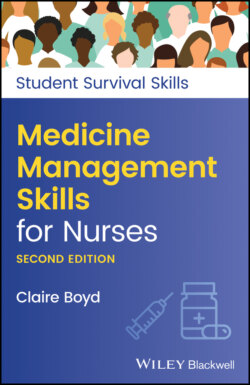Читать книгу Medicine Management Skills for Nurses - Claire Boyd - Страница 31
MEDICATION PROCESS
ОглавлениеThe medication process is made up of four parts.
Prescribing: it is often the nurse who notices that a doctor has prescribed something to which the patient is allergic, perhaps because the nurse knows the patient better.
Dispensing and preparation: a nurse should not use trade names for drugs as confusion may occur, for example Voltarol instead of diclofenac sodium. Perhaps the pharmacist has reconstituted the medication with the wrong transport medium, for example sodium chloride instead of water for injection.
Administration: you need to be very clear which route a medication should be given through and that the dose has been calculated correctly.
Monitoring: you need to check the administration and effect of a medicine on the patient. For example, a patient prescribed diclofenac sodium must be checked to see whether they are asthmatic. Patients with hypertension or heart failure must be monitored carefully if they are given diuretics. Blood pressure, fluid input and output, and sodium and potassium, etc. must be checked.
Any one of these categories could be the weak link where a mistake can occur.
The Department of Health reports that the wrong dose, strength, or frequency of a drug accounts for over a quarter of all medication incident reports.
